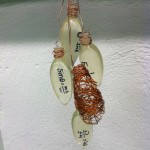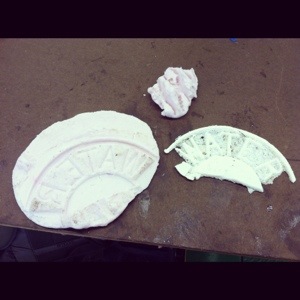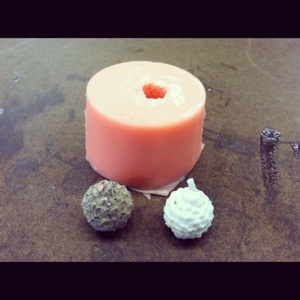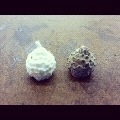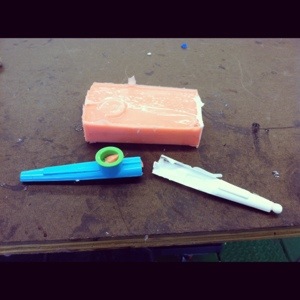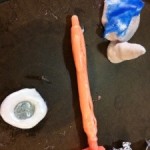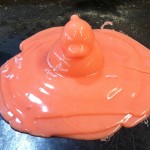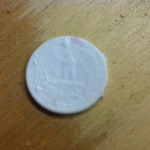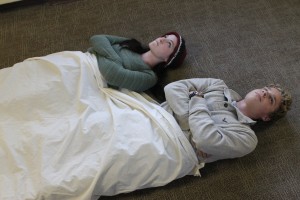Molds
I made three different types of molds: the key mold was made with the blue silicone, the pen was made with the two part pink silicone, and the quarter was made of putty.
I sprayed the key with release, but it would not come out of the mold, and when I forcefully pulled it out, it ruined the mold. The pen mold was successful, but my first try with the resin leaked, I should have made a mothermold to hold it together better. The quarter putty mold worked, and for the project due on Wednesday, I probably will use the putty mold with resin to create my keys.
Trinkets
I apologize for misinterpreting the assignment – initially I thought that we were expected to make three small positives using three different techniques.
Acorn: Blue casting material
Panda: Silicone
Battery: Putty
Rope Swing
I wanted to make an object entirely made of just knots from rope. The base of the swing is comprised of 40 small Celtic knots and is connected to the handles by 4 Bowline knots. The thin neon strings hold all the Celtic knots together.
Revisited: Wide Awake. Revisited:
I revisited the photographs of my project, and tried to go along with my concept of discomfort and awkward intimacy. I found people to model for me so that I could take the pictures. )When you ask people to model for you, sometimes they make strange faces when you tell them to look uncomfortable.)
I took shot of different groups of people, and this was my most successful picture.
“Strange Bedfellows”
Although seemingly ‘cute’ or ‘kitch’ at a first glance, this piece was geared towards a more morbid concept: death as an alternative meaning for the word, “sleep”. More specifically, it explores the role of food as a method of processing death for the sake of human indulgences. But what I found most interesting about food–such as the Japanese sushi dishes–was how a medley of dead animals can be neatly arranged in an almost ‘natural’ fashion on a plate – regardless of whether they were actually from the same hemisphere, or the same cubic kilometer of ocean. This unification of the different species in their final stage of rest is what makes them ‘strange bedfellows’ indeed.
